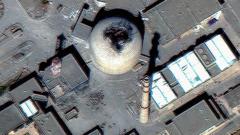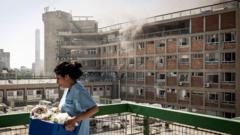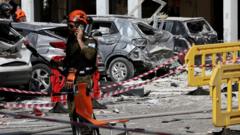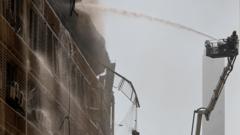On the seventh day of conflict, Israeli jets have struck the Arak heavy water reactor, raising international alarm and deepening tensions.
**Escalating Tensions: Israeli Airstrikes Target Arak Heavy Water Reactor**

**Escalating Tensions: Israeli Airstrikes Target Arak Heavy Water Reactor**
Israeli military conducts airstrikes on Iran's nuclear facilities amid escalating regional conflict.
Israeli forces have intensified their operations against Iranian nuclear sites, launching airstrikes on the still-under-construction Arak heavy water reactor. This military action, described by the Israeli military as a preventive measure against potential nuclear weapons development, has led to significant international attention. The attack specifically targeted the reactor's core seal, an essential component in the process of producing plutonium, which can be weaponized.
The Arak reactor, located approximately 250 kilometers southwest of Tehran, was reported to contain no nuclear material at the time of the strike, as verified by the International Atomic Energy Agency (IAEA). Despite Iran's insistence that its nuclear program is purely peaceful—a claim supported by the development agreement with world powers in 2015—the Israeli military argued that Iran's actions contradicted its commitments, prompting the airstrike.
Subsequent Israeli strikes also struck the Natanz facility, a critical site for uranium enrichment, damaging key infrastructure and potentially impacting Iran's uranium enrichment processes. The IAEA noted the destruction of several buildings, and the agency's director general indicated concerns over the implications of lost power to sensitive equipment within these facilities.
Despite Iran's assurances that its nuclear intentions do not include weaponization, the situation remains precarious. U.S. involvement has been floated, particularly concerning the fortified Fordo site, which would necessitate advanced military capabilities. President Trump's prior decision to withdraw from the nuclear agreement has significantly influenced current dynamics, with Iran responding by advancing its uranium enrichment beyond agreed limits.
The conflict has resulted in substantial casualties on both sides, with Iran claiming that airstrikes have killed numerous citizens and military personnel. As the situation escalates, the international community is closely monitoring developments, particularly concerning the potential for further military action and the broader implications for nuclear non-proliferation efforts in the region.
The Arak reactor, located approximately 250 kilometers southwest of Tehran, was reported to contain no nuclear material at the time of the strike, as verified by the International Atomic Energy Agency (IAEA). Despite Iran's insistence that its nuclear program is purely peaceful—a claim supported by the development agreement with world powers in 2015—the Israeli military argued that Iran's actions contradicted its commitments, prompting the airstrike.
Subsequent Israeli strikes also struck the Natanz facility, a critical site for uranium enrichment, damaging key infrastructure and potentially impacting Iran's uranium enrichment processes. The IAEA noted the destruction of several buildings, and the agency's director general indicated concerns over the implications of lost power to sensitive equipment within these facilities.
Despite Iran's assurances that its nuclear intentions do not include weaponization, the situation remains precarious. U.S. involvement has been floated, particularly concerning the fortified Fordo site, which would necessitate advanced military capabilities. President Trump's prior decision to withdraw from the nuclear agreement has significantly influenced current dynamics, with Iran responding by advancing its uranium enrichment beyond agreed limits.
The conflict has resulted in substantial casualties on both sides, with Iran claiming that airstrikes have killed numerous citizens and military personnel. As the situation escalates, the international community is closely monitoring developments, particularly concerning the potential for further military action and the broader implications for nuclear non-proliferation efforts in the region.




















